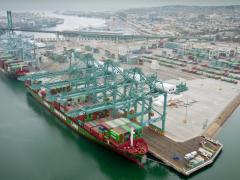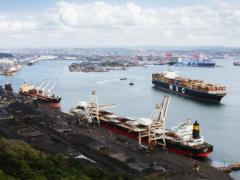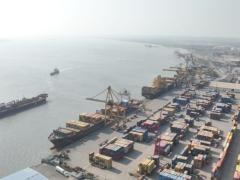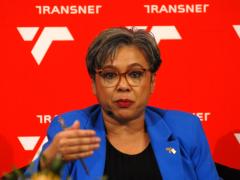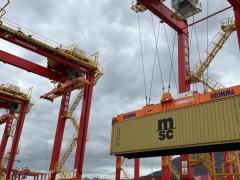Namibia is making significant strides in solidifying its position as a logistics hub for southern Africa, driven by large-scale infrastructure projects and strategic policy frameworks. The ongoing expansion of Walvis Bay port and the development of key transport corridors connecting Namibia to Botswana, Zambia and the DRC are reshaping the reg ion’s logistics landscape. “These efforts are well-placed and increasingly effective, especially when combined with government-driven policy frameworks that promote trade facilitation and investment,” said Darren Jankelow, head of sales, maritime cranes and construction machines at Liebherr-Africa.A key element of Namibia’s logistics transformation has been the container terminal expansion at Walvis Bay, which has already increased port capacity and efficiency, ensuring it can handle growing cargo volumes from regional and international trade. This expansion is not only a boon for Namibia’s logistics industry but also enhances its connectivity to the broader southern African market.“Liebherr is in the process of delivering three new Liebherr harbour mobile cranes to Namport, shipped from our manufacturing site in Rostock, Germany,” said Jankelow. “In addition, two new Liebherr harbour mobile cranes will be delivered t o Te r m i n a l Investment Limited (TiL), which has taken over the container handling operations at the container terminal at the Port of Wa lv i s Bay.”According to Jankelow, these cranes will significantly enhance the handling capacity and f lexibility of the port, reinforcing Namibia’s growing role in regional logistics. “It is an exciting milestone in our ongoing partnership with Namport, TiL and the wider Namibian logistics community.”But, he said, as the logistics sector in the country continued to advance, there were still critical areas to address. “Chief among these is the need for modernisation and expansion of inland transport infrastructure, especially the rail network, which plays a crucial role in bulk and long-distance cargo. Also important is harmonising customs procedures across borders as this would reduce transit delays and unlock further regional trade efficiencies.”He said Namibian ports, particularly the Port of Walvis Bay, were fast becoming benchmarks in regional port efficiency. “The infrastructure is modern and designed for scalability, making it well-positioned to serve the growing demands of regional trade. For local operators, this means better levels of service, faster turnaround times and reduced logistical costs.”He said continued investment in port and rail infrastructure in Namibia was expected, with greater use of smart technologies like tracking and cargo visibility tools. “There is also a push toward green logistics, particularly with Namibia’s ambitions in renewable energy.” LV




